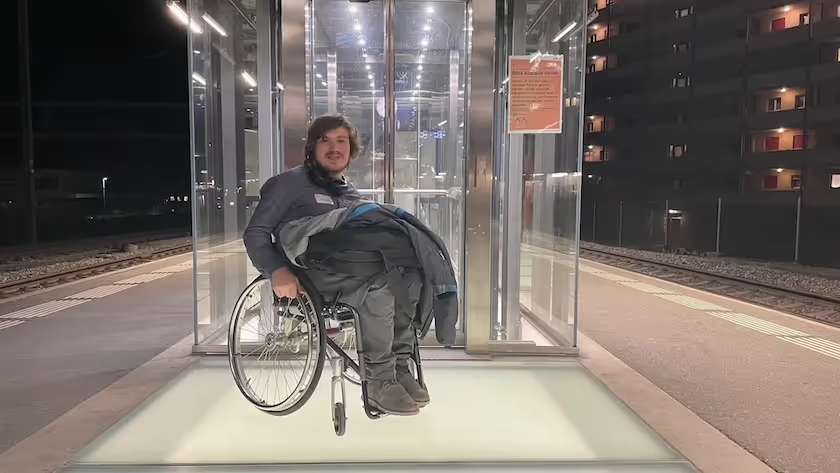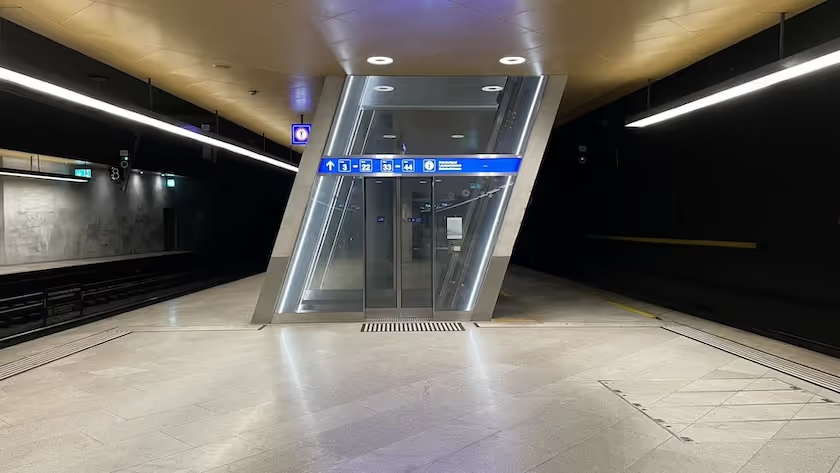Does the lift work?
This information is crucial for computer scientist and wheelchair user Florian Bürgi. Because if an elevator doesn't work on a platform, that means a delay or the end of the journey for them as a person with mobility disabilities. Florian explains why it is important to know in advance whether an elevator is working.
The elevator is broken - what now?
“It often happens that elevators are faulty,” says Florian. “It affects me alone at least once a month. Sometimes the broken lift is located at large train stations where there are still alternatives. Then the defect is unpleasant and shouldn't be, but it doesn't have as much influence on my achievement of goals at this moment.” But reality is often different. “I remember a particularly concise situation,” says Florian. “When I got off at Oberzollikofen train station on my way to work, the elevator was broken. At that moment, I was stuck as there was no alternative to the lift for me. I was forced to pick up the phone and call my work colleagues who helped me.” But that solution isn't always available. “It also happened that I had to get on a train again just to arrive at the same station on another platform and thus avoid the faulty elevator.” That is annoying and costs time.


“It's about more than just comfort for individuals. It is about creating an inclusive, efficient and reliable public transport network for all.”

Working together for an inclusive transport network!
“At the GovTech Hackathon 2023, together with a team, I developed a prototype for recognizing and displaying the lift status. The idea behind this is to publish the current operational readiness of public elevators. To this end, the existing status information should be harmonized and published together with elevator data, such as location, wheelchair suitability and used floors.”
Florian Underlines the Importance of Centralizing Information About Lifts. “Lift manufacturers have the data on the status of the elevators. A pool of accessibility data that is digitally collected and made accessible would be a significant step forward for barrier-free mobility.” Not only wheelchair users benefit from this, but also people with lots of luggage, temporary injuries and senior citizens. “It's about more than just comfort for individuals. It is about creating an inclusive, efficient and reliable public transport network for all.”









